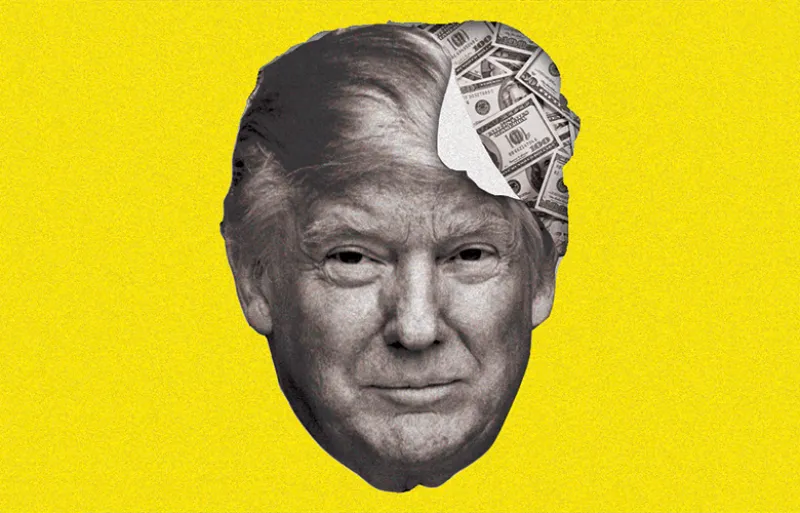In August several hundred neo-Nazis and white supremacists marched as part of a Unite the Right rally at the University of Virginia. The marchers shouted, “White lives matter!”, “Jews will not replace us!”, and “Heil Trump!” They clashed with counterprotesters. Violence ensued. A young woman, Heather Heyer, was killed and 19 others were injured after being struck by a car. Two state police officers died in a related helicopter crash. The Southern Poverty Law Center said the Charlottesville rally was the largest white supremacist gathering in more than 40 years.
In response to the rally, President Trump offered several comments, which The Economist summarized as a “mealy-mouthed condemnation of ‘hatred, bigotry and violence — on many sides, on many sides,’ even though only one side appears to have paraded with heavy weaponry and murdered one of its opponents.”
After absorbing the social and political dimensions of the violence and the president’s response, I slowly recalibrated back to investing and had the odd thought that this mix of hatred and equivocation must surely move self-identified ESG investors to take to the ramparts and directly and actively engage with the CEOs who remained on Trump’s American Manufacturing Council and Strategic and Policy Forum. After all, engagement is a favored tactic of ESG investors.
To paraphrase The Economist, ESG investors will have few easier tasks in their careers than condemning CEOs who stand next to a president who fails to denounce Nazis. Sometimes ESG investing feels like trying to pirouette across a minefield.
This is not one of those times.
However, with few exceptions (the most notable being a thoughtful, forthright letter from Pat Miguel Tomaino of Zevin Asset Management to Johnson & Johnson), ESG investors failed to seize the post-Charlottesville moment. In fact, I’d argue they failed to act on multiple opportunities.
Let’s begin by discrediting the argument that gives ESG investors dispensation for their reticence because the presidential groups were disbanded three days after President Trump’s equivocation.
I, as well as anyone, understand that it takes time to write an essay and even more time for compliance to approve it. But this argument fails because it ignores that the CEOs and their boards were certainly aware of President Trump’s social and racial views long before Charlottesville. ESG investors also were certainly aware that these views are antithetical to ESG principles.
ESG managers should have queried the CEOs about their decision to even accept the invitation to join the groups. To avoid the straw man argument proffered by some CEOs (e.g., Jamie Dimon) to justify their initial and continued participation, we must acknowledge that one can be an American patriot and help the president without being his handmaiden. There is a critical difference between offering ad hoc advice to a president and, as Larry
Summers puts it, “lending your prestige and that of your company to joining an advisory board of his creation. That is accepting a presidential appointment.”
With an appointment come responsibility, culpability, and guilt by association.
Evidence that the ESG community missed this opportunity is the CEOs’ own decision to disband. According to Bill George, the former chief executive of Medtronic, the CEOs themselves realized that they “cannot live with customers thinking they are in cahoots with someone who supports white supremacists or neo-Nazis.”
Additionally, although numerous post-election actions by President Trump were a direct affront to ESG principles, the decision to withdraw from the Paris climate accord should have been the clarion call to ESG investors. After all, as Fiona Reynolds, managing director of the PRI Association, notes, climate risks are PRI members’ “No. 1 ESG concern.”
And though Elon Musk and Bob Iger resigned because of this decision, many others chose to stay on. The ESG community remained largely silent.
Fortunately, redemption is still possible. According to Jason Furman of Harvard University’s Kennedy School, CEOs’ “public rejection of Mr. Trump has done nothing to sap their appetite to guide policy. Lower-ranking executives from large firms continue to serve on informal working groups to help the Treasury and the Commerce Department with deregulation.”
Additionally, the National Infrastructure Advisory Council does not appear to have been disbanded.
There is also the instance of alleged crony capitalism, reported by The New York Times, involving Stephen A. Schwarzman, head of the president’s Strategic and Policy Forum and CEO of Blackstone, and Saudi Arabia’s sovereign wealth fund. The Times cited anonymous sources claiming that the fund committed $20 billion to a new Blackstone infrastructure program only after Mr. Schwarzman had started advising the president. It would seem that such allegations would at least motivate ESG investors to “engage” with Blackstone on this topic.
The Trump presidency might be a pox upon many, but, perversely, it is a godsend for ESG managers. Investors, perhaps viewing ESG investing as an antidote to this presidency, are pouring money into ESG investments. And corporations are being forced to deal with a veritable smorgasbord of environmental, social, and governance issues almost daily. The opportunity is clear. But will ESG investors be able to shake off their Birkenstock mentality and do what Essex Investment Management’s Bill Page proposes: become genuine activist managers that use ESG principles as their lodestar?






